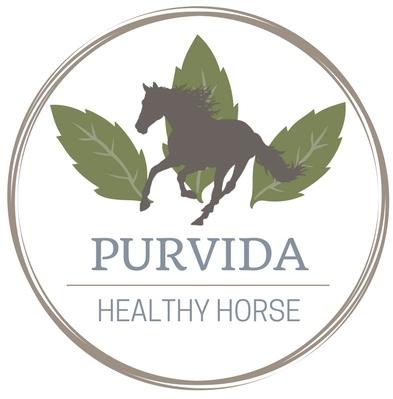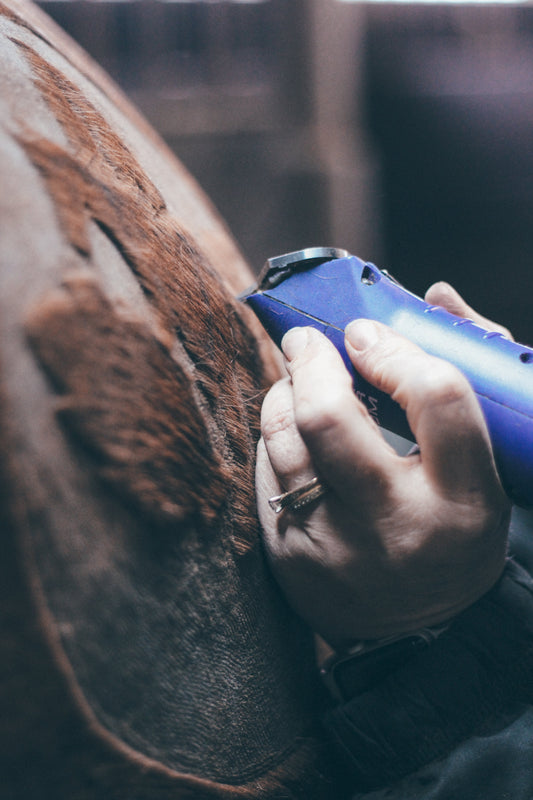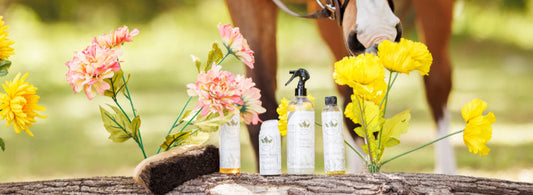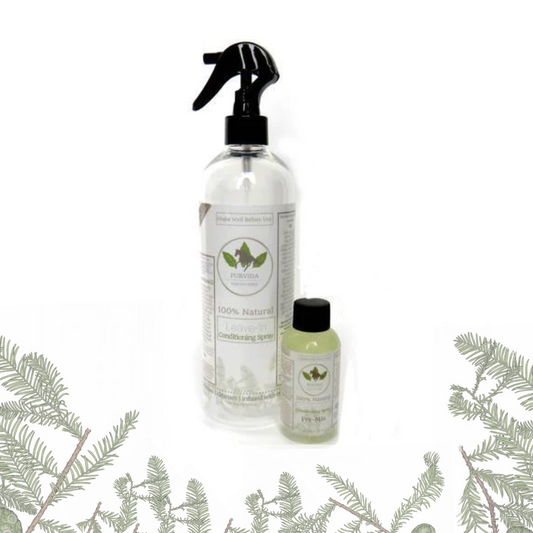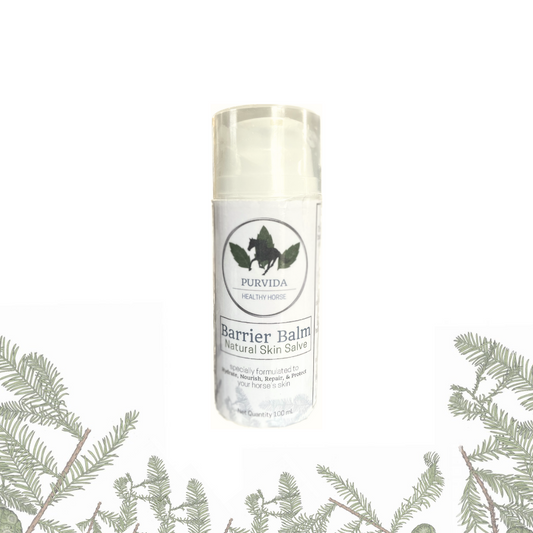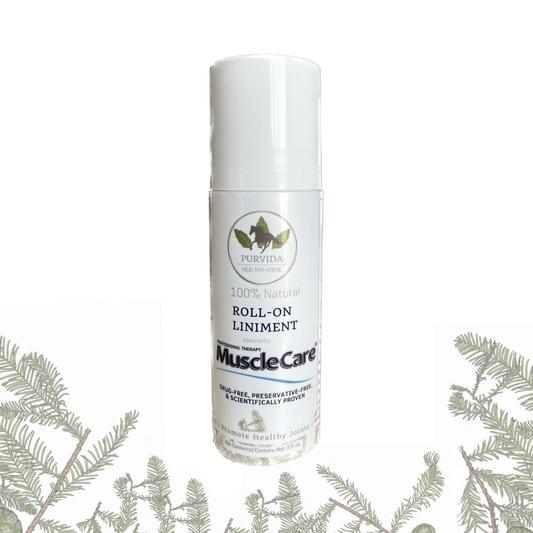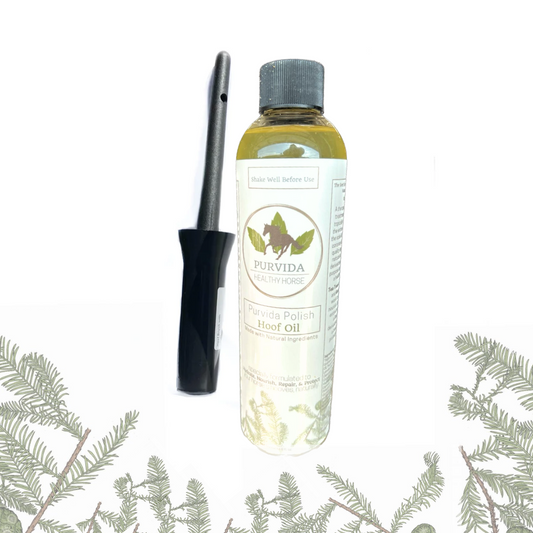
The clocks are moving ahead, the sun is getting warmer, and spring should be here, right? Well, not quite yet for us equestrians. First, we have to make it through the mud.

Do you have a bone to pick with spring, a.k.a. mud season? Keep reading for our top tricks & tips to help keep your horse clean and healthy until summer rolls around.
Tip #1: No hoof, no horse
As the ground begins to thaw and the snow turns to rain, this can mean your horse will be spending a good portion of their turn-out time standing in mud or puddles.
Wet ground + mud + horses = hoof problems

Standing in mud or dampness for long periods of time opens up the average horse to infections such as thrush: an infection of the hoof, particularly affecting the frog--caused by anaerobic bacteria. Anaerobic means that this bacteria grows best in conditions without oxygen. You’ll notice, or more likely smell, a very stinky black build-up in the crevices of the frog. Luckily, it’s easily treatable and responds very well to topical treatment. Tea-tree essential oil is our favorite way to rid horses of thrush, and is a key ingredient in our new Purvida Polish Hoof Oil, specifically for that reason.
If you horse is suffering from thrush right now, carefully clean their hoof as best you can, apply Purvida Polish Hoof Oil to the affected area daily, and make sure to be diligent about ensuring they have a clean, dry stall to hang out in every day so their hooves can dry out.
 Tip #2: Legs, legs, legs
Tip #2: Legs, legs, legs
Move up from the hoof just a little, and now you find a “scratch” on your horses' heel bulbs or in their pastern. Early on, it may appear reddened, warm, and ooze a small amount of yellowish liquid. As the condition progresses, hair is lost, the area becomes thickened, and hard scabs form. Great, pastern dermatitis, infamously known among riders as “mud fever”, “greasy heel” or “scratches”.
Ideally, keeping your horse as dry and clean as possible can help avoid this entire problem, to begin with. However, many horses are prone to developing some form of dermatitis, especially at this time of year when skin can be chronically wet & muddy. Mild dermatitis responds well to a daily and thorough cleaning and drying of the affected area. If left untreated though, the infection can develop and move up the legs or deeper into the tissue.
That’s why it’s important to nip this one in the bud--our favorite way: a daily dose of our Original Conditioning Spray, made with cedarwood essential oil to naturally and effectively rid your horse’s coat of bacteria and fungus. However, more severe cases might require veterinary attention and antibiotics, so make sure you pay very close attention to your horse’s legs!
Tip #3: Beware the bumps
Mo’ rain, mo’ problems. At least for horse people, anyways. The third member of the toxic triplets of mud season is rain rot. Caused by that same pesky bacteria that causes pastern dermatitis, except this time your horse will develop lesions on their neck and back. 
It’s especially prevalent at this time of year for a couple of reasons. First, when your horse’s skin is chronically wet, rolls in the mud, and stands out in pouring rain, the skin loses is ability to defend against bacteria and fungi, making it easier for this bacterium, which is found in soil, to infect the skin. Horses with heavy winter coats who are in the process of or not yet started shedding out can also hold moisture in their coats for much longer than a body-clipped horse, making the perfect conditions to exacerbate the above problem.
The best way to prevent and combat this condition is to keep your horse as dry as possible by waterproofing blankets, and ensuring they have a clean, dry stall to spent a portion of their day in. But should you notice raised areas of hair with scabs beneath, your horse is likely dealing with a bout of rain rot. Regular and thorough grooming with our all-in-one conditioning spray can quickly help heal up this condition, as coconut oil and witch hazel completely rids the skin and hair of all traces of mud and dirt, while cedarwood essential oil naturally kills that pesky bacteria.
However, BE GENTLE, removing the scabs may be painful for your horse, but it’s important to get them off to allow the cedarwood essential oil to do its job. Be sure to also disinfect any grooming tools used on a horse with rain rot, and don’t share grooming tools between horses.

We hope these tricks help you manage the mud a little more easily this season! And Remember: the arrival of mud isn’t all bad, at least it means that your days of riding outside in a t-shirt are just around the corner!
